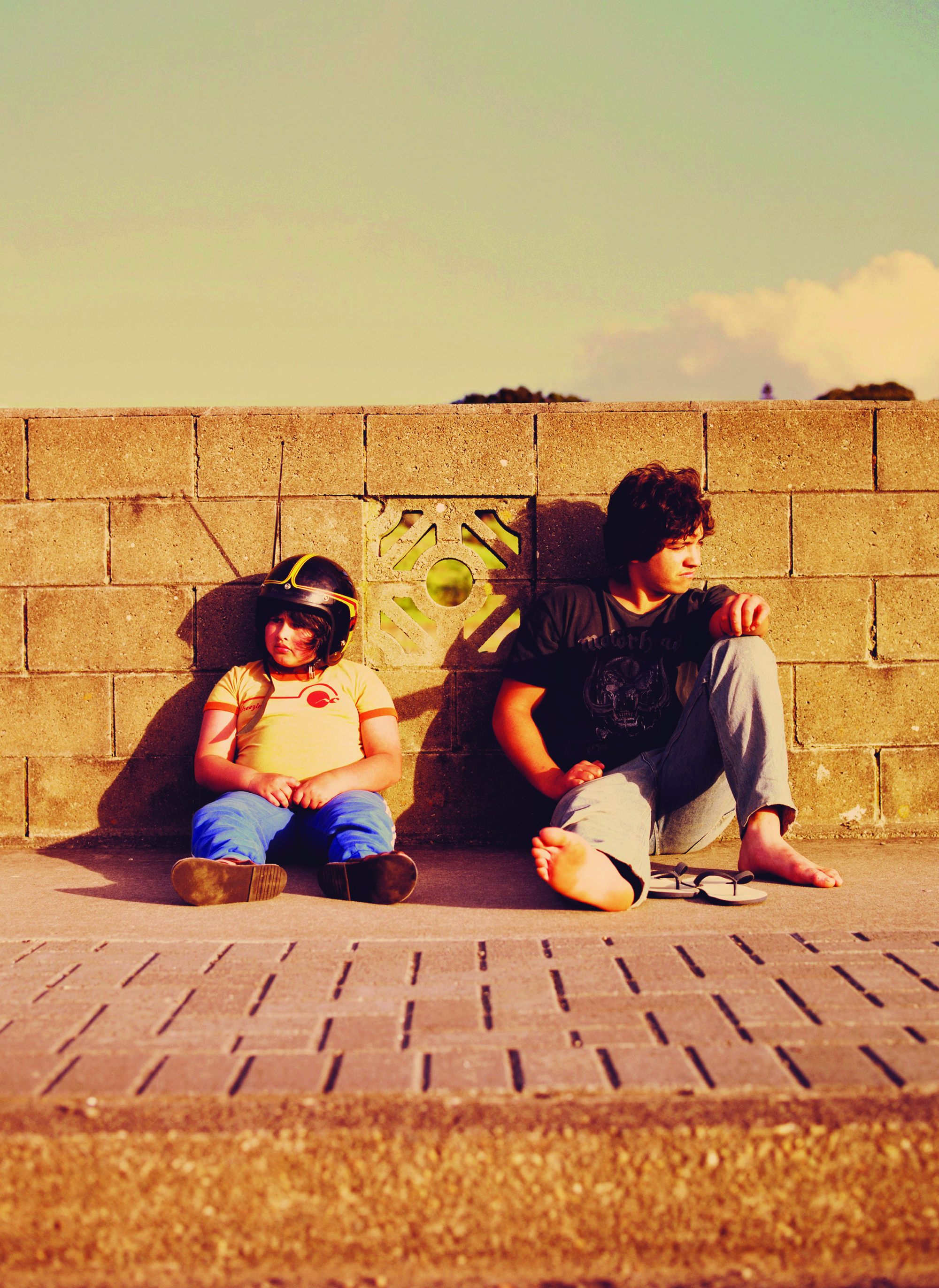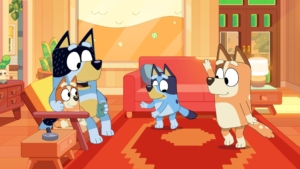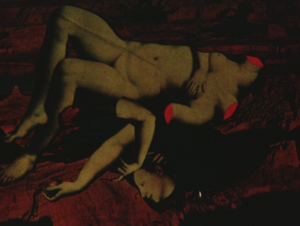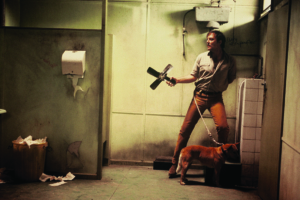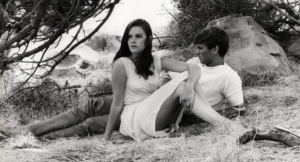New Zealand’s first television-movie star was just fifteen years old. Jamie Higgins, plucked from a Wellington schoolyard, devastated the nation with his harrowing depiction of Jimmy Sullivan in Murray Reece’s The God Boy (1976). A lonely pawn caught in the crossfire of his parents’ violent, tragic relationship, Jimmy comes of age through a process of emotional hardening – by, as he says, learning to ‘care about nothink’.[1]Jamie Higgins as Jimmy Sullivan, quoted in ‘The God Boy’, The New Zealand Film Archive, <http://www.ngataonga.org.nz/feature-project/pages/God-Boy.php>, accessed 4 March 2015.
Ever since, it seems, New Zealand film has been preoccupied with the fraught transition from childhood to adulthood. As Vincent Ward, director of Vigil (1984) and The Navigator: A Medieval Odyssey (1988), has suggested: ‘Maybe we are attracted to the childhood theme because New Zealand is so remote that, when we venture into the world, we do so as innocents.’[2]Vincent Ward, quoted in John Downie, The Navigator: A Mediaeval Odyssey, Flicks Books, Trowbridge, 2000, p. 2. As innocent as New Zealand’s lambs, many of its child protagonists might be – but not so the worlds they inhabit. No Dickensian delusions of ‘happy, happy’ Christmases and quiet firesides are likely to inform their reminiscing in old age. Instead, the child embodies a conduit for the playing-out of adult, national and international sociopolitical tensions on screen – a shaky bridge between past and future, encapsulating the country’s darkest fears and furtive hopes.
In 2002, Keisha Castle-Hughes’ performance as twelve-year-old Pai brought Canadian audiences to tears during Whale Rider’s world premiere at the Toronto International Film Festival. ‘[Sam Neill] was crying, [director] Niki [Caro] was crying, we all cried,’ recounts Witi Ihimaera, who wrote the novel on which the film is based. ‘In a world which thinks it knows everything and has seen everything, Whale Rider and Niki’s fantastic direction took us to a place where we could rediscover the innocence in ourselves.’[3]Witi Ihimaera, quoted in Sarah Stuart, ‘Riding to a Wave of Triumph’, Sunday Star Times, 22 September 2002. Eight years later, Taika Waititi’s offbeat dark comedy Boy (2010) charmed viewers with its eleven-year-old protagonist’s (James Rolleston) reimagining of his irresponsible, long-absent father as a superhero. And, in 2013, Mark Albiston and Louis Sutherland’s Shopping gave us beleaguered siblings Willie (Kevin Paulo) and Solomon (Julian Dennison), who grapple with the complexities of their mixed-race parentage against a background of institutionalised discrimination. All set in remote coastal towns, all dealing with the tensions of growing up Polynesian in postcolonial New Zealand and all channelling William Wordsworth’s renowned expression ‘The Child is father of the Man’, these three films present linked yet distinct explorations of coming of age in the early twenty-first century, following in the footsteps of their precursors Ngati (Barry Barclay, 1987) and Once Were Warriors (Lee Tamahori, 1994).
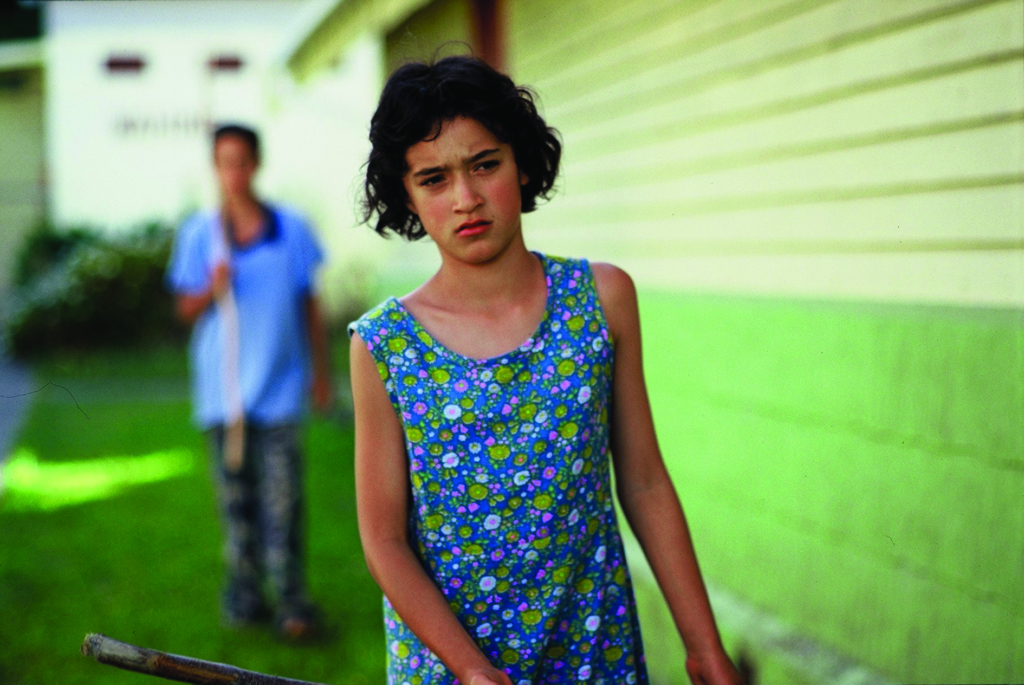
Challenging convention: Whale Rider
In Whale Rider, Pai’s rite of passage is significant not only to her personal growth, but also to her tribe, to the North Island community of Whangara that she calls home and, arguably, to young women all over the world. She must claim her rightful place as the Nga¯ti Konohi tribe’s new leader, despite her grandfather Koro’s (Rawiri Paratene) aggressive fixation on finding a male successor, in line with tradition. Thus, on her shoulders are borne a call for spiritual renewal and a warning against stubborn patriarchy, with New Zealand studies academic Bruce Babington describing Pai as ‘feminism’s most appealing face’.[4]Bruce Babington, A History of the New Zealand Fiction Feature Film, Manchester University Press, Manchester, 2007, p. 228.
While Pai’s idealism ultimately sets real-world change in motion, Boy’s reveries only serve to enrapture him, preventing him from facing the reality that his father can be a dangerous and abusive man.
Unable to access appropriate adult guidance in human society, Pai finds it in nature. Like Wordsworth’s idealised child, she is innocent – uncluttered by convention and unfettered by hierarchy. This freedom enables her to view the natural world as a spiritual teacher, and to hear the whales when they call for her to assume the role of chief. She matures, not by ‘growing out’ of her belief in magic, but by trusting her supernatural intuition – even in the face of death. Ultimately, her coming of age is tied to the message that, to progress, her tribe must maintain its connection with nature while embracing the possibility of female leadership. As she professes in a speech delivered at her school:
I was not the leader my grandfather was expecting, and by being born I broke the line back to the ancient ones […] But we can learn. And if the knowledge is given to everyone, we can have lots of leaders. And soon, everyone will be strong, not just the ones that have been chosen.
Whale Rider’s utopian storyline was a hit with cinema audiences worldwide, and Ihimaera commended the way Caro
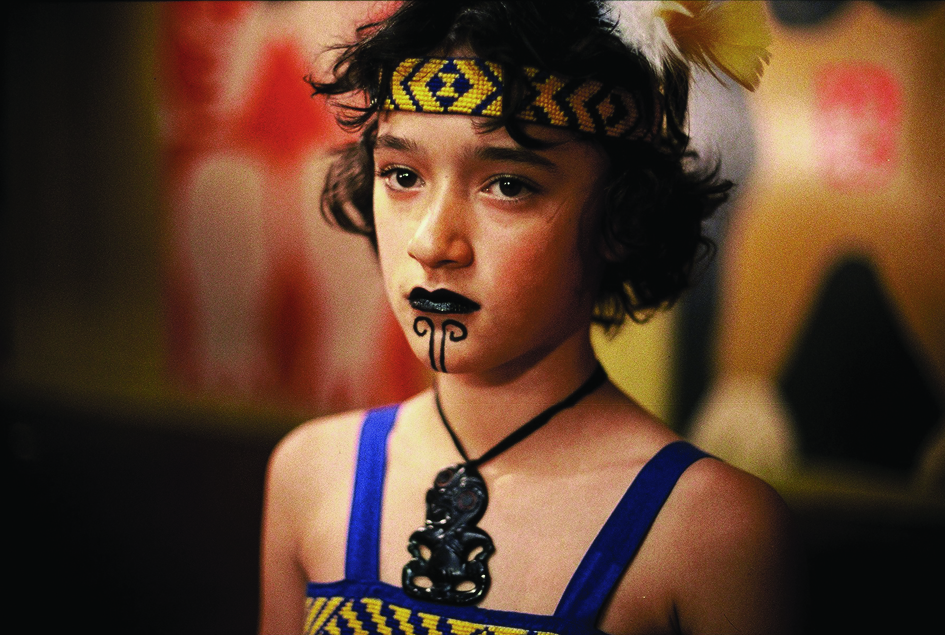
updated the story so that it is very relevant beyond the year 2003. It’s not just about a community that is faced with a particular problem of ancestry and succession, it’s also about women and how they need to find and make their own way […] in a male-orientated world.[5]Witi Ihimaera, quoted in Film Education, Whale Rider study guide, 2003, <http://www.filmeducation.org/pdf/film/WhaleRider.pdf>, accessed 4 March 2015.
However, the film’s simplistic views on oppressive conventions and on the clash between tradition and modern life have proved less appealing in other quarters. In discussing Whale Rider alongside Once Were Warriors, University of Northampton’s Janet Wilson writes:
critiques have focused on [the film’s] neglect of the colonial past and its present-day legacies such as demands for land reparation and assertion of Māori sovereignty, the universalising of their themes, and the overriding of specific iwi [tribe] and hapu [clan] affiliations by homogenising Māori as a single ethnic category.[6]Janet Wilson, ‘Re-representing Indigeneity: Approaches to History in Some Recent New Zealand and Australian films’, in Alistair Fox, Barry Keith Grant & Hilary Radner (eds), New Zealand Cinema: Interpreting the Past, Intellect, Bristol, 2011, p. 204.
Whereas both Pai and Boy are Maori and, despite their troubles, have clear-cut goals and dreams, Willie is half-Samoan and has been raised without the means to develop a coherent sense of self, reflecting the dilemma that burdens people of Pacific Islander descent living in postcolonial New Zealand.
Indeed, Caro creates an insular, practically all-Maori world – a depoliticised version of that in the novel. The original narrator, Uncle Rawiri, is replaced by Pai, and his links with Maori politics and recollections of racism are erased. Wilson further contends that colonialism ‘is only implied as a possible cause of the tribe’s present-day problems, such as youthful apathy, lack of direction and the urban drift, presented as the background to the “intergenerational dispute”.’[7]ibid. Film theorists Trisha Dunleavy and Hester Joyce agree, arguing that the ‘intrusion’ of the pakeha (white people) is only hinted at by ‘rusting car wrecks, abandoned machinery and overgrown roadsides that pepper an otherwise breathtakingly beautiful coastal landscape’.[8]Trisha Dunleavy & Hester Joyce, New Zealand Film & Television: Institution, Industry and Cultural Change, Intellect, Bristol, 2011, p. 234. Pai’s feminist triumphs might represent broader national and international hopes, but Whale Rider’s suggestion that the troubles afflicting the Maori population can be addressed by overcoming internal problems rather than addressing postcolonial displacement is limiting. Wilson even goes so far as to propose that the film is better understood in light of its more general philosophical and spiritual ideas than its insights into ethnographic specificities.[9]See, for example, Wilson, op. cit.
Escaping to the imagination: Boy
Like Whale Rider, Boy tells the story of a Maori child who must come of age without suitable adult leadership. In the process, he comes to symbolise both risks and possibilities, thereby acting as ‘father of the Man’. However, Boy explores a more intricate social and historical matrix than that represented in Whale Rider, touching on postcolonialism, identity struggles and substance abuse. Moreover, Boy’s ironies, dark comedy and complex solutions contrast with Whale Rider’s romanticism – a way forward is suggested, but it is by no means a certain path.
Set in Waihau Bay in 1984, the film begins when the eponymous young hero’s grandmother (Mavis Paenga) – and primary carer – leaves home to attend a funeral. Boy is left to single-handedly look after his six-year-old brother, Rocky (Te Aho Eketone-Whitu), a motley crew of other children and his pet goat, when onto the scene bursts their roguish father, Alamein (played by Waititi), and his ragtag ‘gang’, the Crazy Horses. Rocky, who spends inordinate amounts of time sitting beside their mother’s grave and blaming himself for her death (she passed away during his birth), is wary of the intrusion and keeps his distance. Boy, on the other hand, has spent a lot of time imagining Alamein, who has been largely absent in their lives, as the perfect father. In Boy’s dreams – depicted via a combination of camera work and hand-drawn animation – his dad is a relative of Michael Jackson, a deep-sea diver and a war hero.
Whereas Pai seeks solace and guidance in nature, Boy finds them in his imagination. But, while Pai’s idealism ultimately sets real-world change in motion, Boy’s reveries only serve to enrapture him, preventing him from facing the reality that his father can be a dangerous and abusive man. His delusions come to a head when Alamein’s self-obsession and incompetence turn violent, forcing Boy to learn that no amount of admiration for a fantasy role model can create a real one. At this point, he is compelled to ‘grow up’ and must learn to depend on himself – a lesson in self-determination that echoes Pai’s moving school speech.
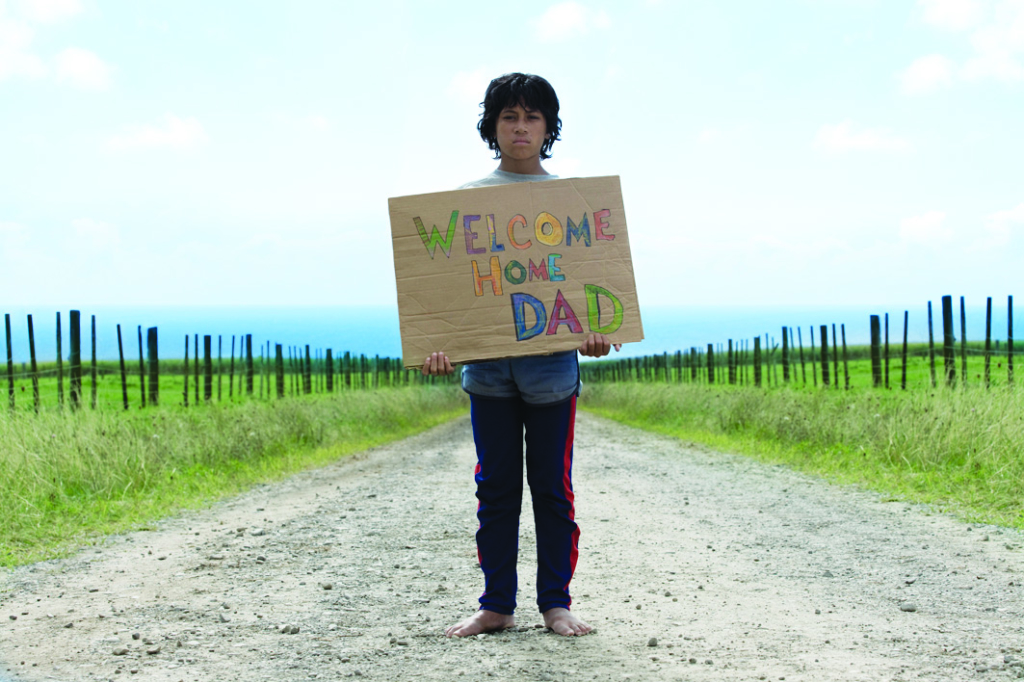
Although both Whale Rider and Boy depict protagonists who manage to evolve against all odds, the films also carry powerful warnings regarding the risks involved in expecting children to mature without the guidance of appropriate role models. For Pai, the danger is most obviously manifested in her near-death at sea, symbolising the potential destruction of her tribe, should her grandfather remain stubborn. In Boy’s case, the peril lies in real-life social problems – fighting, drinking alcohol, smoking marijuana and lashing out physically at Alamein – and, for a moment, we fear that he is destined to imitate his father’s bad choices.
Despite covering similar ground to Once Were Warriors, Boy’s overall mood is undeniably comic, punctuated with intensely disturbing moments. ‘I can’t really handle depressing films about depressing subjects,’ says Waititi, who ‘prefer[s] to make something that pulls an audience in with a light, welcoming tone, and then bash them with little moments of drama and real, human emotion’ – an approach he deems ‘truer to real life’.[10]Taika Waititi, quoted in Paladin and Unison Films, Boy press kit, 2010, p. 9. Indeed, whereas Whale Rider suggests, through its insular narrative, that the tribe’s difficulties are essentially internal, Boy implicates New Zealand’s broader postcolonial history. Boy’s imagining of Alamein in various legendary roles is mirrored in his father’s heroic perception of himself. He is the leader of a ‘gang’, his mission is to locate missing ‘treasure’ (in reality, this refers to money that he had buried years beforehand), and he persuades Boy to refer to him as ‘Shogun’. But, while they offer viewers moments of hilarity, the escapist fantasies of both father and son also reference colonisation’s effects on the cultural identity of Alamein’s generation (and, consequently, of the children who look up to them). According to Waititi:
Alamein is based on a generation of people who were brought up to be ashamed of their culture. They were punished at school for speaking their language and were constantly told that to be Maori meant you were stupid. And so a lot of them moved from the country to the cities and started or joined gangs; clubs where they could congregate and feel like a family […] and as much as gangs have changed and become horrible and embarrassing parts of society, some were originally started with positive intentions.
So all of these guys, and girls too, started living fantasy lives where they changed their names and became less Maori, preferring to identify with outlaws, rebels, and romantic heroes like Gunslingers, Native Americans, famous conquerors, and Samurai […] On a positive note, this gang generation had a huge turn-around in the late [1980s] and most went back to their Maori roots.[11]ibid., pp. 6–7.
This complexity that has characterised contemporary Maori identity formation, as captured in Waititi’s film, means that, while Whale Rider ends on a thoroughly optimistic note – the implication being that, thanks to Pai’s determination, her grandfather has realised the error of his conservative ways and her tribe will flourish – Boy’s pragmatic conclusion is more unsettling. On one hand, viewers are relieved that Boy has adopted a more realistic view of his father, and the scene in which the two of them meet Rocky at the brothers’ mother’s grave suggests that Alamein might be starting to admit that he, too, is grieving. On the other, it appears that Rocky has started to take on some of Boy’s delusions about their father – ‘How was Japan?’ he asks – reinforcing how the systemic problems plaguing New Zealand’s Maori peoples trickle down through generations. Nevertheless, with Boy being the highest-grossing feature film in New Zealand to date, having amassed NZ$7 million at the domestic box office,[12]Boy has surpassed previous record holder The World’s Fastest Indian (Roger Donaldson, 2005); see Fuseworks Media, ‘Boy Now Top Grossing NZ Film of All Time’, Voxy.co.nz, 20 May 2010, <http://www.voxy.co.nz/entertainment/boy-now-top-grossing-nz-film-all-time/5/49284>, accessed 4 March 2015. it’s undeniable that audiences have been inspired by the film’s candid depictions and subtle political commentary.
Between two worlds: Shopping
Offering little of Whale Rider’s idealism and only snippets of Boy’s humour, Shopping strikes a bleak tone reminiscent of Once Were Warriors; magical representations and self-conscious fiction are replaced by an uncompromising commitment to realism. Notwithstanding, like the two works already discussed, Albiston and Sutherland’s film presents a protagonist thrown prematurely into an adult world: to avoid the destructive future faced by his predecessors, he must mature before his time by developing independence and standing up for his beliefs.
Shopping depicts the plight of adolescent protagonist Willie and little brother Solomon, who endure a devastatingly insecure home life ruled over by abusive, alcoholic pakeha father Terry (Alistair Browning) and under-attended by loving but cowed Samoan mother Theresa (Maureen Fepuleai). Willie divides his time between dodging his father’s racist jibes and violent blows, working a meaningless job at the local Farmers department store and taking care of Solomon. In turn, the younger sibling copes by inventing funny fairy tales about two princes – paralleling Boy’s fantasies, and recalling the imaginative poetry of Once Were Warriors’ Grace Heke (Mamaengaroa Kerr-Bell) and the journals of Janet Frame (Kerry Fox) from Jane Campion’s absorbing An Angel at My Table (1990). Soon, however, charismatic thief Bennie (Jacek Koman) enters the picture and – joined by his sexy yet volatile teenage daughter Nicky (Laura Peterson) and their criminal gang – offers Willie a ‘way out’ in the form of the thrilling, drug-fuelled vagaries of the road.
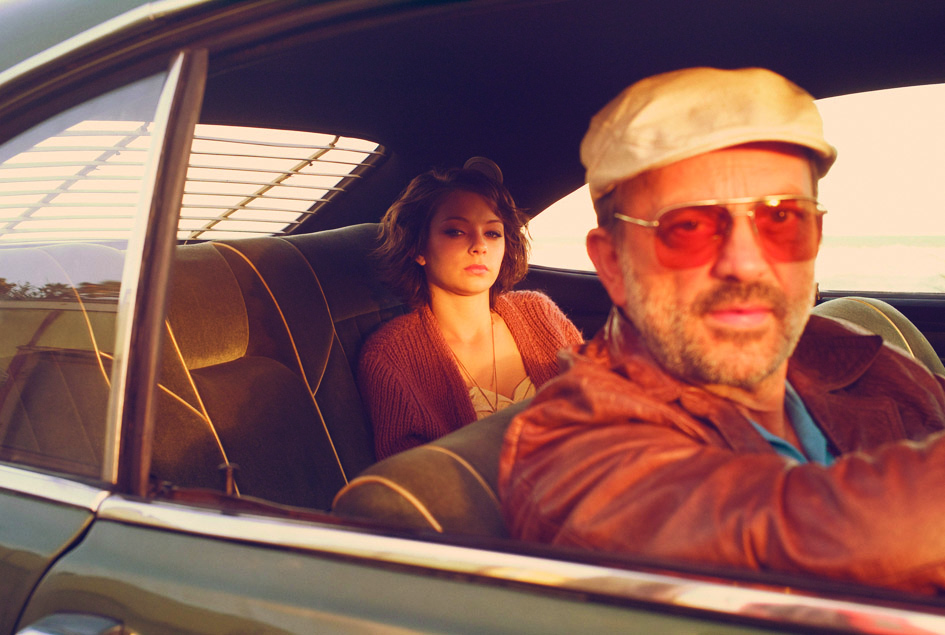
Whereas both Pai and Boy are Maori and, despite their troubles, have clear-cut goals and dreams, Willie is half-Samoan and has been raised without the means to develop a coherent sense of self, reflecting the dilemma that burdens people of Pacific Islander descent living in postcolonial New Zealand. The wider resonance of his personal struggle is established in the opening scene, with an archival newsreel reporting real-life racial tensions and dawn raids targeted at non-Maori Polynesian immigrants – the result of tightened border policies following the late 1970s / early 1980s recession.[13]For more on New Zealand migration, see Richard Bedford, ‘New Zealand: The Politicization of Immigration’, Migration Policy Institute, 1 January 2003, <http://www.migrationpolicy.org/article/new-zealand-politicization-immigration>, accessed 12 March 2015. Even though the link between Willie’s father’s racism and the outside world is not made explicit in the film, it is implied that his attitudes reflect those in the society he and his children live in.
Lacking a meaningful identity, Willie becomes caught between two dangerous, coercive authority figures, both of whom demand total obedience. Arguably, these two pakeha men represent colonial forces. Terry could be seen to symbolise the more traditional, imperialistic Western standpoint, which views the colonised as inferior and enacts oppression through mental and physical abuse. Bennie, on the other hand, could be seen as emblematic of the contemporary multicultural world, with his seemingly ‘fun’ offerings seducing Willie while simultaneously erasing his non-white identity. As Willie becomes increasingly submissive to Bennie, committing crimes and abusing substances, viewers fear – just as we did when watching Whale Rider and Boy – that, in the absence of an inspiring parental figure, he might be doomed to replicate the behaviour of his destructive ‘role models’. Fortunately, like Pai and Boy before him, Willie experiences an epiphany that stimulates a dramatic journey towards independence – in his case, he must protect his brother, whose physical safety is at stake.
Complementing their depiction of Willie’s growing empowerment throughout the narrative, Albiston and Sutherland show viewers the world through his eyes, a device that lends the film astounding authenticity and raw emotion. A handheld camera shoots from behind doors and at low angles, while dialogue is truncated, occasionally mumbled and never sentimentalised. As Stony Brook University’s E Ann Kaplan has outlined, films centring on the indigenous experience enable a visual structure whereby the protagonists’ ‘often silently endured traumatic experiences can be “spoken” or imaged’;[14]E Ann Kaplan, quoted in Wilson, op. cit., p. 200. in this way, ‘viewers who are witnesses can acknowledge responsibility for loss [of culture] and begin a process of mourning.’[15]Kaplan, paraphrased in Wilson, ibid., p. 200.
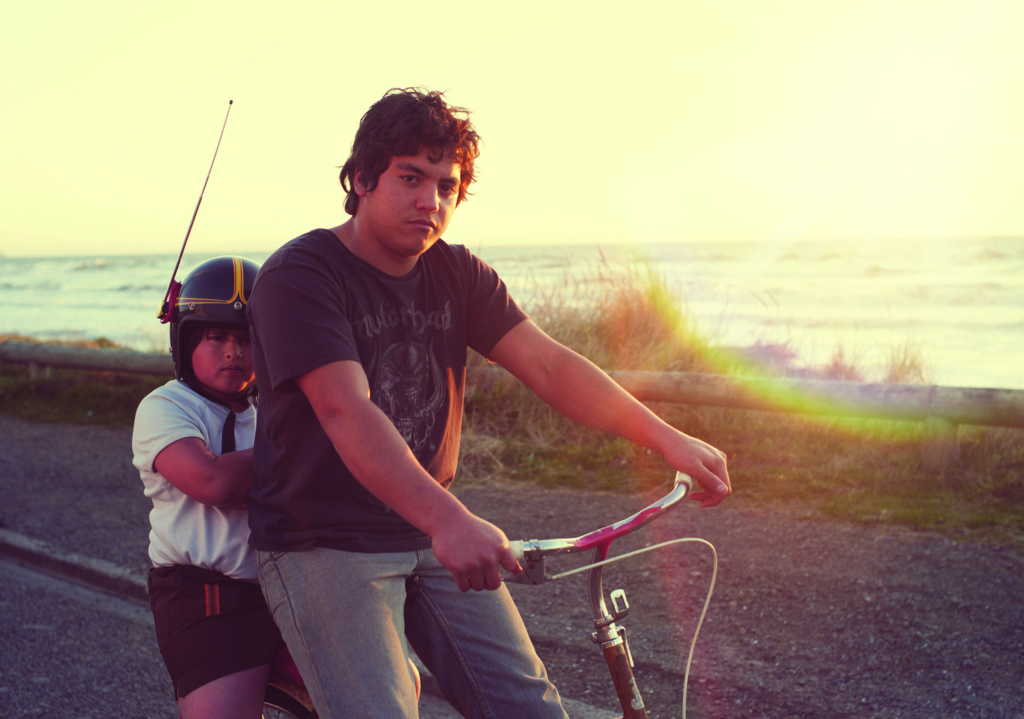
Growing up Kiwi
The three works examined here approach the subject of coming of age through a broad palette of tones – from Whale Rider’s romanticism, to Boy’s eccentricity and off-the-wall humour, to Shopping’s distressing realism. Yet the respective journeys of Pai, Boy and Willie all have ramifications that affect not only their own senses of autonomy and identity, but also those of their loved ones and, by extension, of the New Zealand represented by each film. Unlike Jimmy Sullivan, they must learn, not to relinquish their ability to ‘care’, but to find solace and power in dreaming, to overcome their delusions, to develop self-reliance, and to fill the void created by the absence of suitable adult role models. While Pai’s journey calls for Maori spiritual renewal, a reconnection with nature and the assertion of a feminist response to the social order, Boy’s highlights the need to face the loss of personal and/or cultural identity, and Willie’s represents the dilemma of being mixed-race in a multicultural world, emphasising the importance of cultivating a sense of self.
As Wordsworth intimated, it is in childhood that we form the bedrock of values and self-concepts that we bring into the adult world. As much as these films present idealised protagonists, they simultaneously convey both fear and hope – the risk of existing in an inescapable, self-destructive cycle in which the development of a meaningful identity is next to impossible, and the promise that, through the child, history can be confronted and the future started anew.
Endnotes
| 1 | Jamie Higgins as Jimmy Sullivan, quoted in ‘The God Boy’, The New Zealand Film Archive, <http://www.ngataonga.org.nz/feature-project/pages/God-Boy.php>, accessed 4 March 2015. |
|---|---|
| 2 | Vincent Ward, quoted in John Downie, The Navigator: A Mediaeval Odyssey, Flicks Books, Trowbridge, 2000, p. 2. |
| 3 | Witi Ihimaera, quoted in Sarah Stuart, ‘Riding to a Wave of Triumph’, Sunday Star Times, 22 September 2002. |
| 4 | Bruce Babington, A History of the New Zealand Fiction Feature Film, Manchester University Press, Manchester, 2007, p. 228. |
| 5 | Witi Ihimaera, quoted in Film Education, Whale Rider study guide, 2003, <http://www.filmeducation.org/pdf/film/WhaleRider.pdf>, accessed 4 March 2015. |
| 6 | Janet Wilson, ‘Re-representing Indigeneity: Approaches to History in Some Recent New Zealand and Australian films’, in Alistair Fox, Barry Keith Grant & Hilary Radner (eds), New Zealand Cinema: Interpreting the Past, Intellect, Bristol, 2011, p. 204. |
| 7 | ibid. |
| 8 | Trisha Dunleavy & Hester Joyce, New Zealand Film & Television: Institution, Industry and Cultural Change, Intellect, Bristol, 2011, p. 234. |
| 9 | See, for example, Wilson, op. cit. |
| 10 | Taika Waititi, quoted in Paladin and Unison Films, Boy press kit, 2010, p. 9. |
| 11 | ibid., pp. 6–7. |
| 12 | Boy has surpassed previous record holder The World’s Fastest Indian (Roger Donaldson, 2005); see Fuseworks Media, ‘Boy Now Top Grossing NZ Film of All Time’, Voxy.co.nz, 20 May 2010, <http://www.voxy.co.nz/entertainment/boy-now-top-grossing-nz-film-all-time/5/49284>, accessed 4 March 2015. |
| 13 | For more on New Zealand migration, see Richard Bedford, ‘New Zealand: The Politicization of Immigration’, Migration Policy Institute, 1 January 2003, <http://www.migrationpolicy.org/article/new-zealand-politicization-immigration>, accessed 12 March 2015. |
| 14 | E Ann Kaplan, quoted in Wilson, op. cit., p. 200. |
| 15 | Kaplan, paraphrased in Wilson, ibid., p. 200. |
